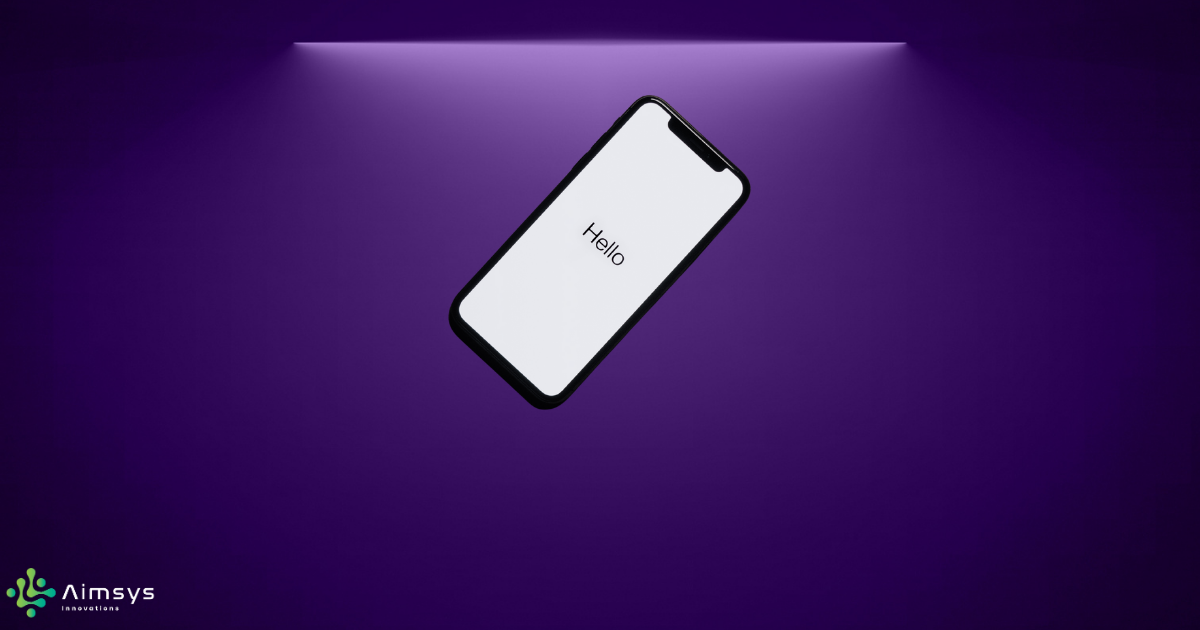Posted At: Sep 24, 2025 - 477 Views

Minimalism Meets Functionality: The Return of “Invisible Design” in UI/UX
In UI/UX design, the most impactful solutions are often the least visible. “Invisible Design” is making a strong comeback in digital experiences, blending minimalism with functionality to create interfaces that feel natural, intuitive, and almost effortless. It’s not about stripping away features—it’s about removing friction, distractions, and visual noise, so users can focus on what matters most.
What Is Invisible Design in UI/UX?
Invisible design isn’t about hiding elements but about making the interface disappear into the experience. Users shouldn’t notice the design itself—they should notice how easily they can achieve their goals.
Think of:
- Spotify’s autoplay feature, which continues music seamlessly without a visible prompt.
- Google Search’s clean interface, where the search bar is central and everything else fades away.
- Gesture-based navigation on smartphones, which replaced clunky buttons with intuitive swipes.
The design recedes, while the user’s flow takes center stage.
Why Invisible Design Is Returning to UI/UX
As digital ecosystems expand, users are bombarded with notifications, features, and overly complex interfaces. Invisible design is regaining prominence because it addresses these modern challenges:
- Cognitive Overload: Users crave simplicity in a noisy digital world.
- Mobile-First Experiences: Limited screen space demands functional minimalism.
- Accessibility: Simple, clear, and intuitive designs are more inclusive.
- AI & Automation: Smart systems can anticipate user needs without cluttered UI.
- Emotional Connection: Users feel calmer and more satisfied when the design “just works.”
Core Principles of Invisible Design in UI/UX
Invisible design requires intentional decisions at every stage of the design process. Here are the key principles:
- Clarity Over Decoration: Prioritize legibility, hierarchy, and whitespace.
- Context Awareness: Show information only when users need it.
- Intuitive Interactions: Rely on natural gestures, voice commands, and predictive actions.
- Consistency & Familiarity: Reuse recognizable patterns so users don’t need to relearn.
- Seamless Transitions: Smooth animations and microinteractions reduce friction.
- Accessibility First: Minimalism should never come at the cost of inclusivity.
Examples of Invisible Design in UI/UX
1. Navigation Without Navigation
- Hamburger menus, contextual actions, and predictive search eliminate the need for cluttered navigation bars.
- Example: Netflix surfaces the most relevant shows upfront, reducing the need for deep browsing.
2. Content as the Interface
- Stripping away buttons and letting content guide actions.
- Example: Medium’s reading experience, where typography, spacing, and minimal controls make the content the hero.
3. Microinteractions & Automation
- Tiny, purposeful animations that guide users without overwhelming them.
- Example: Slack’s status updates or LinkedIn’s typing indicators.
4. Invisible Tech, Visible Value
- AI-powered personalization that tailors experience without visual overload.
- Example: Spotify’s Discover Weekly, which feels effortless yet deeply personalized.
Benefits of Invisible Design in UI/UX
- Reduced Cognitive Load – Users can focus on their tasks, not the interface.
- Improved Accessibility – Cleaner interfaces are easier to navigate for everyone.
- Faster Onboarding – Less complexity means quicker user adoption.
- Greater User Satisfaction – Experiences feel smooth and purposeful.
- Timeless Appeal – Simple, functional designs resist becoming outdated.
Challenges of Invisible Design
While powerful, invisible design comes with trade-offs:
- Over-Simplification: Removing too much can frustrate advanced users.
- Discoverability: Hidden gestures or features may go unnoticed.
- Context Dependency: What feels intuitive in one culture or device may not in another.
- Accessibility Risks: If not tested thoroughly, invisible design can exclude certain users.
Designers must strike a balance—minimalism should enhance, not limit.
The Future of Invisible UI/UX Design
The next era of digital design is about interfaces that get out of the way. With the rise of AI, AR/VR, and voice-first technologies, design will become even more seamless:
- Voice & Gesture UIs will replace visual clutter.
- AI-driven interfaces will predict and fulfill needs proactively.
- Contextual UIs will adapt dynamically to user behavior.
- Universal design will ensure minimalism is accessible to all.
Invisible design isn’t about making design irrelevant—it’s about making user experience effortless.
✅ Final Thought:
In UI/UX, the best designs aren’t the ones users remember—they’re the ones users don’t notice at all. As minimalism meets functionality, invisible design reminds us of the ultimate goal: design that empowers, not distracts.
